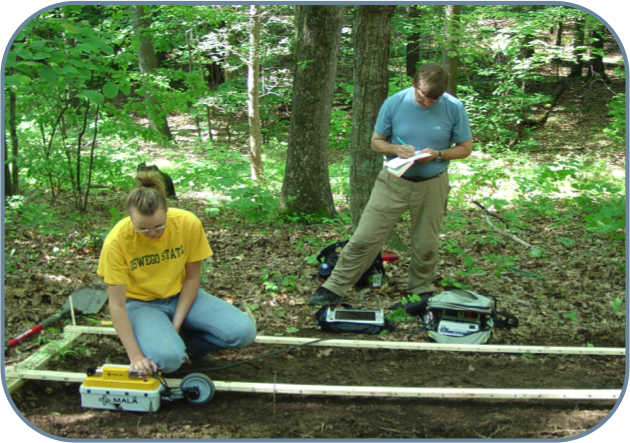 The CZO is an NSF-funded field research site where researchers from a broad spectrum of disciplines are studying the biological, geochemical, pedologic, and hydrologic processes converting the underlying shale bedrock into soil and regolith.
The CZO is an NSF-funded field research site where researchers from a broad spectrum of disciplines are studying the biological, geochemical, pedologic, and hydrologic processes converting the underlying shale bedrock into soil and regolith.
The infiltration of precipitation and the movement of water down hillsides is of fundamental importance to weathering and hydrologic processes. Near surface geophysics is an important tool for investigating the preferential flow paths in the soil and fractures in the bedrock that create heterogeneous flow patterns.
In this project we have been experimenting with time-lapse ground-penetrating radar (GPR) to image shallow subsurface flow using a wood frame to ensure reproducible data collection before and after a water release. For ground truth we inject a solution of brilliant blue dye, then excavate to compare with the GPR data and identify preferential pathways. 
Guo, Li, Henry Lin, Bihang Fan, Jonathan Nyquist, Laura Toran, and Gregory J. Mount. 2019. “Preferential Flow through Shallow Fractured Bedrock and a 3D Fill-and-Spill Model of Hillslope Subsurface Hydrology.” Journal of Hydrology 576 (September): 430–42.
Nyquist, J. E., L. Toran, L. Pitman, L. Guo, and H. Lin. 2018. Testing the Fill-and-Spill Model of Subsurface Lateral Flow Using Ground-Penetrating Radar and Dye Tracing. Vadose Zone J. 17. doi:10.2136/vzj2017.07.0142
